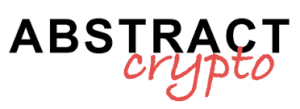Treasury Secretary Janet Yellen and Federal Reserve (Fed) Chairman Jerome Powell recently issued a joint statement on the banking crisis, saying that liquidity in the financial system is strong.
This announcement comes as the US economy is recovering from the impact from the recent banking meltdown , which caused considerable disruption and fear in financial markets.
Fed Chairman provides reassurance on liquidity after banking crisis
Liquidity refers to the ability of an asset to be easily converted into cash without affecting its market price.
In financial markets, liquidity is critical because it ensures that transactions can be completed quickly and smoothly. Lack of liquidity can cause market volatility, where prices can fluctuate widely due to a shortage of buyers or sellers.
During the last period, liquidity in the financial system has been a concern as investors rushed to sell assets and raise cash to cover losses.
This has led to a sharp decline in the prices of many assets, including stocks and bonds, and a freeze in credit markets.
In response, the Federal Reserve and other central banks around the world have injected massive amounts of liquidity into the financial system through various measures, such as buying bonds and lending to banks.
The joint statement by Yellen and Powell signals that the measures taken by the Federal Reserve and other central banks have succeeded in ensuring that liquidity in the financial system remains strong.
This is important because it helps support economic growth by ensuring that businesses and households have access to credit and capital.
The purpose of this statement seeks to alleviate concerns about the state of liquidity in the current economic environment.
The statement reads:
“We are closely monitoring market conditions and are confident that liquidity remains strong. The Federal Reserve stands ready to take appropriate actions to maintain market stability and ensure the smooth functioning of financial markets.”
Concerns following the collapse of the banks
Inflation expectations have soared in recent weeks, fueled by a combination of rising energy and food prices, supply chain disruptions, and ongoing fiscal stimulus, not to mention events that caused banks to close, including the prominent Silicon Valley Bank.
This has led to fears that the Federal Reserve may be forced to raise interest rates sooner than expected, potentially triggering a market sell-off.
However, Yellen and Powell stressed that the Federal Reserve’s goal remains to achieve its dual mandate of maximum employment and stable prices.
They stressed that any decision to raise interest rates will be based on economic data, rather than market expectations.
Yellen and Powell’s statement echoes similar reassurances from other central bankers in recent weeks.
In early March, European Central Bank President Christine Lagarde said that liquidity conditions in the eurozone remain “ample” and that the bank stands ready to intervene if necessary.
Similarly, Bank of Japan Governor Haruhiko Kuroda said the bank will maintain its ultra-loose monetary policy despite rising inflation expectations.
Liquidity in the banking system
Despite the reassurances from central bankers, some analysts remain cautious. In a recent note, some market analysts warned that liquidity conditions could deteriorate rapidly if market participants begin to doubt the central bank’s ability to control inflation.
It was noted that a sharp rise in bond yields could trigger a “liquidity event,” leading to a sell-off of riskier assets.
The potential liquidity event highlights the delicate balancing act that central banks face.
On the one hand, they must respond to rising inflation expectations to avoid overheating the economy.
On the other, they must avoid triggering a market sell-off by moving too aggressively.
There is a growing understanding of the importance of effective communication to address these challenges. By reassuring markets that liquidity remains strong, they have tried to reduce the risk of a sudden liquidity event.
However, if inflation continues to rise, they will face increasing pressure to act, potentially testing the strength of liquidity conditions.


